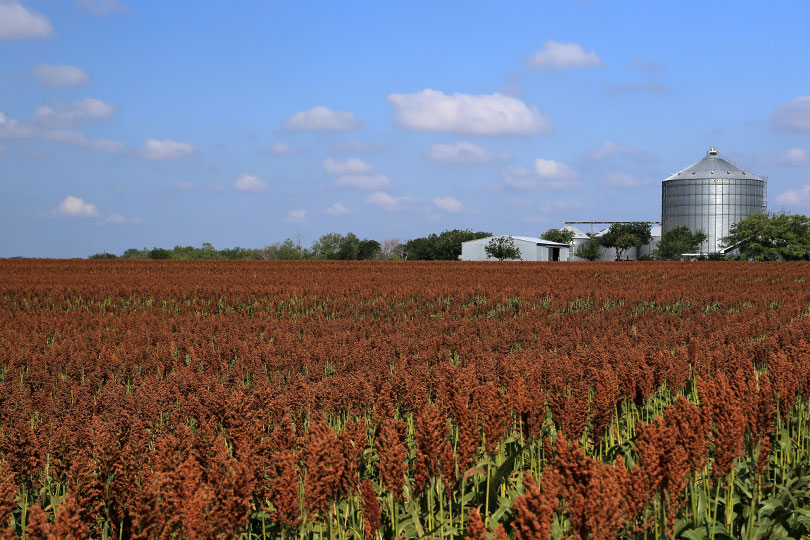By Jennifer Dorsett
Field Editor
The U.S. Department of Agriculture’s (USDA) National Agricultural Statistics Service (NASS) has long been the go-to source for accurate, unbiased crop and livestock reports, but farmer confidence in the reports has waned over the past few years.
Large changes in estimates of planted acreage, crop yields and inventory levels have caused wild swings in the market, according to the American Farm Bureau Federation (AFBF). Recent severe weather events like last year’s Midwestern derecho have made the issue more pronounced.
Farmers questioned the agency’s ability to respond quickly to changing conditions and provide updates in real-time.
“At our 101st annual convention in early 2020, the voting delegates recommended that the AFBF board of directors convene a Farm Bureau-led coalition of our members to review and make suggested improvements to USDA-NASS’s data collection and reporting methodology,” Shelby Myers, AFBF economist, said.
A working group of 10 members, including Texas Farm Bureau (TFB) District 13 State Director Scott Frazier, was assembled to study the issue and make recommendations on how to improve farmer confidence. Over the course of several months, the group conducted more than a dozen interviews with NASS staff, trade associations, market analysis firms and land-grant universities.
“Compared to what other countries have, we’re light years ahead in terms of offering reliable crop and livestock data,” Frazier, a Nueces County farmer and rancher, said. “What we found is just that NASS needs to work on explaining what they do and how they do it.”
The survey collection methods, in particular, could use some updating, he noted.
In the report released by AFBF’s USDA-NASS Working Group, the organization said only 17 percent of the more than 3 million known and potential farms and ranches in the U.S. responded to the 2017 Census of Agriculture. That’s likely because most farmers don’t fully understand what NASS plans to do with data collected in both routine and census surveys, Frazier said.
“The farmer interface is not very good. Someone just calls you up and you have 20 or 30 pages of surveys to get through, and there are a lot of extraneous questions that don’t apply,” he said. “I know personally, when I get one of those surveys in the mail or if one of their surveyors catches me in the field, I’m usually busy, and work takes priority over answering multiple questions.”
Increasing transparency and improving communication by conducting town hall meetings across the U.S. will help farmers and ranchers understand the purpose and value of those surveys, the AFBF group said. The group also suggested that NASS begin attending agricultural conventions and trade shows to “tell their story” and get the word out about the agency’s mission.
Coordinating with land-grant universities and other federal agencies could help, too.
“Often, I don’t like to give out acreage numbers on these surveys, because I feel like they should already have that data from other sources like [Farm Service Agency] FSA,” Frazier said. “I realize there’s some data that FSA and the crop insurance folks don’t have that NASS may need, and that data is important. But working with other agencies to reduce that duplication of questions would make it more likely that we respond in full to those questionnaires.”
Frazier noted working with county Extension agents and crop consultants may be another way NASS could utilize boots-on-the-ground reporters who have a good understanding of regional crops, their planting dates and other information necessary to collect accurate data.
Increased transparency in the statistical methodology used to arrive at NASS estimates and reports also would be beneficial, according to the group.
“We were not impressed with how folks felt the data matched up with what’s really going on. Many people we talked to said a report takes 8-10 days to come out after it’s completed. Then, something happens in the market, and that’s not reflected in real-time,” he said. “The derecho of last year was one example. A report came out a week after the storm hit that totally didn’t reflect the impact on the Midwest’s crops.”
The group recommended NASS accelerate technology adoption, which would give the agency more flexibility to respond in real-time to changing conditions, such as adverse weather.
Remote-sensing data, Landsat data, monitoring and decision-making applications, machine-learning technology and spatial and spectral imaging from satellites and drones could also be used to improve survey accuracy and estimate in-season damage to crops due to natural disasters, the group wrote.
“There’s a lot of opportunity to use satellite imagery and drones to get data without relying on an oral or written survey response,” Frazier said.
Implementing these recommendations will improve the work already being done by NASS, the report concluded.
AFBF is committed to partnering with NASS to encourage farmer participation in NASS surveys, he said.
“The end users, the people who write newsletters and blogs and use that data to create their own reports on crop conditions and the like, they all seem to be pretty confident in NASS and what they’re reporting,” he said. “We know the data is there, and the agency is capable of disseminating it. We just need to focus a bit on how it’s done and explaining that process to farmers and ranchers to encourage more participation.”
The full AFBF USDA-NASS Working Group report is available at fb.org.

